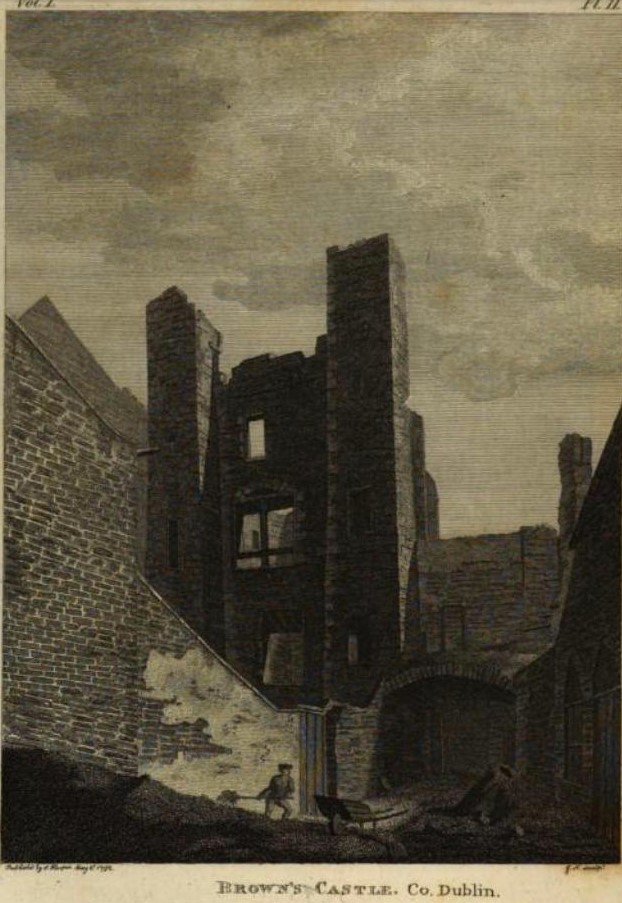Castle turned tavern, turned debtor’s prison
Originally known as Brown’s Castle, and part of the Dublin city wall fortifications, this square tower was converted into a tavern called the Black Dog, named after a sign that hung above the door.
In the 17th century, however, the tavern closed, and the tower became the main debtor’s prison for Dublin. Those who could not pay their debts were locked up here until they either paid up, or an alternative solution was reached. Officially the prison was called the Sheriff Marshal’s Prison or Marshalsea Prison, but the Black Dog remained the more commonly used name. Another colloquial name was the “Nunnery”, because the city watch would use it to lock up women who were arrested at night.
It had space for about 50 people over four floors and a dungeon. In 1729, the keeper of the prison was put on trial for corruption and mistreatment of the prisoners. He was accused of charging the prisoners a shilling a night for their room, and those who could not were consigned to a dark, damp, airless dungeon, which had an open sewer.
The building seems to have been already in a bad state in 1818 and is described as:
This is, without doubt, the worst constructed Prison in this city, and the responsibility attached to me as Inspector of City Prisons, with respect to this Marshalsea, is really unpleasant, as I only possess the name, without the power to alleviate the distress of the prisoners.
I had about a year ago the power of providing straw and coals for the common hall, but as the grand jury could not legally present any sum to cover such expense … I thought it advisable to apply to the corporation of the city : but in the present deranged state of their finances (though the order passed) yet the means are not forthcoming.
Thus, on the subscription of prisoners … and on casual charity, are the unfortunate inmates of the City Marshalsea depending; and I can truly assert that I look upon the times when I have to visit this prison as the most uncomfortable hours of my life, being obliged to visit such an asylum of misery, without the power of ordering the windows to be glazed, or any other little accommodation to be given to the prisoners, who stand much in need of assistance; without doubt, the citizens of Dublin are most charitable, and this prison has partaken of the effects of their benevolence…
The hatch of this prison has been repaired within the last year, but every other part of it is falling fast in decay”
Rev. P. Gamble, Local Inspector in “Report on State of Prisons in Ireland, 1818
There seems to have been little improvement in the next decades because the Inspector of Prisons in 1783 described the building as:
“Black Dog, in the City of Dublin, is in a most unwholesome Situation in New-Hall Market, surrounded with every Exhalation necessary to promote Putrefaction.”
Sir Jeremiah Fitzpatrick M.D., 1783
The prison was closed in 1794 after the new Sherriff’s Prison opened up on Green Street, and fell in ruin quickly after. Its exact location is unknown but estimated to be in the area of West Gate Apartments, south of Wormwood Gate.
Illustration from ‘The Antiquities of Ireland’ by Francis Grose from 1791
